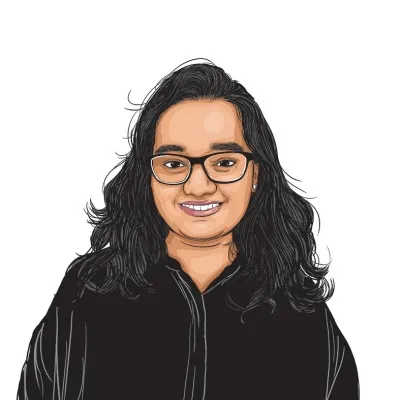A report by Radio Free Asia (RFA), an independent news agency funded by the United States government, has claimed that North Korean officials are instructing parents with girls named Kim Ju-ae to change the names, as it is the name of the daughter of the country’s leader Kim Jong-un.
Kim Ju-ae has of late been spotted at various official events with her father, such as the recent grand military parade in the North Korean capital of Pyongyang. This is unusual, given that not much information has historically been made available about the dynasty that has ruled North Korea since its founding in 1966.

Kim Ju-ae is believed to be around 10 years old, and she has been dubbed the “respected child” and the “beloved daughter” by state media, which has given rise to speculation about her possible rise to power in the coming years. Kim Ju-ae is believed to have an older brother and a younger sister, all Kim Jong-un’s children with his wife Ri Sol-ju. Kim Ju-ae was seen in person by American basketball superstar Dennis Rodman, who was invited to visit Pyongyang by Kim Jong-un in 2013.
Story continues below this ad
What’s wrong with girls being called Kim Ju-ae?
The RFA report quoted a social security official in North Korea as saying “the reason why the authorities are investigating individuals named ‘Ju Ae’ and forcing them to change their names is because the name of the daughter touted as the ‘Noble Child of the Highest Dignity’ is Ju Ae”.
This would not be the first time such an attempt has been made. The names of the country’s leaders from the Kim dynasty have similarly been treated exclusively in the past. In 2014, two years after Kim Jong-un succeeded his father Kim Jong-il as supreme leader, it emerged there had been a directive preventing similar names, according to a report by NPR.
“The name bans are an attempt to build cults of personality around the Kim dynasty. Their birthdays are important national holidays and North Koreans are required to hang their portraits on their walls,” the NPR report from 2014 said.
And will many people be impacted by the directive?
Yes. Unlike most Indians, Europeans, or Americans, Koreans (as also Chinese) write their family names (surnames) ahead of their given names — and in both North Korea and South Korea there are only a small number of these surnames, compared with how naming systems work elsewhere.
Story continues below this ad
The South Korean embassy in Norway has an article on its website that says, “There is a Korean joke that says if you throw a stone from a hill in Seoul, there is a fifty per cent chance that it would hit a person with the surname Kim, Lee or Park. This is somewhat true. Korea has approximately 288 family names, fewer than other countries.”
The article adds that those with the surname Kim add up to around 10.69 million individuals, and comprise 21.5 per cent of South Korea’s entire population — which means every fifth South Korean is a Kim. The second and third places on the list are occupied by Lee (14.7 per cent) and Park (8.4 per cent). Together, Kims, Lees, and Parks account for nearly 45 per cent of the population. Other common family names are Choi, Kang and Cho. A look at some famous Korean celebrities seems to confirm this: Netflix’s ‘Squid Game’ was led by Lee Jung-jae, ‘Gangnam Style’ was by Park Jae-sang, and Parks and Kims make up more than half the members of arguably the two biggest K-pop groups of today, Blackpink and BTS.
Obviously then, a directive like the one issued by the North Korean dictatorship would create problems for a very large number of people.
In addition, as the RFA report states, “Korean names are usually three syllables, one for the surname and two for the given name, and given names are usually formed by choosing two Chinese characters for their meanings.” Therefore, multiple characters have the same pronunciation in Korean, and so many Korean names will have the same pronunciation even though they may technically be different.
Story continues below this ad
But why are there so few Korean surnames to begin with?
The South Korean Embassy article explains the history of Korean surnames. Initially, only the ruling elite had surnames. Family names were a matter of prestige and so working-class people were not allowed to keep such names for themselves. But this changed over time.
The Encyclopedia Britannica states, “In the Silla kingdom (57 BCE–935 CE) — which variously battled and allied with other states on the Korean peninsula and ultimately unified most of Korea in 668 — Kim (which means ‘gold’) was the name of a family that rose to prominence and became the rulers of Silla for 700 years.”
Under the Goryeo dynasty (935–1392), the granting of surnames became a mark of favour by the king. In the Joseon dynasty of the late 14th century, more and more people began adopting these names associated with the elite. Thus, names like Park, Choi, and others today are from powerful clans of the past. However, it must be noted that not all Kims or all Lees are related to each other, as multiple clans of the same name existed across geographies.
In fact, the Korean princess Heo Hwang-ok, who some believe to have Indian origins, had direct descendants named Kim and Lee. More than six million present-day Koreans trace their lineage to her.
Story continues below this ad
In the late Joseon era of the 17th century, an order prohibited marriage between people sharing the same last name, but this was revoked in 1997. The association with a few aspirational names endured. As the country has not seen much immigration and is by and large an ethnically homogenous society, the tradition has endured.








































